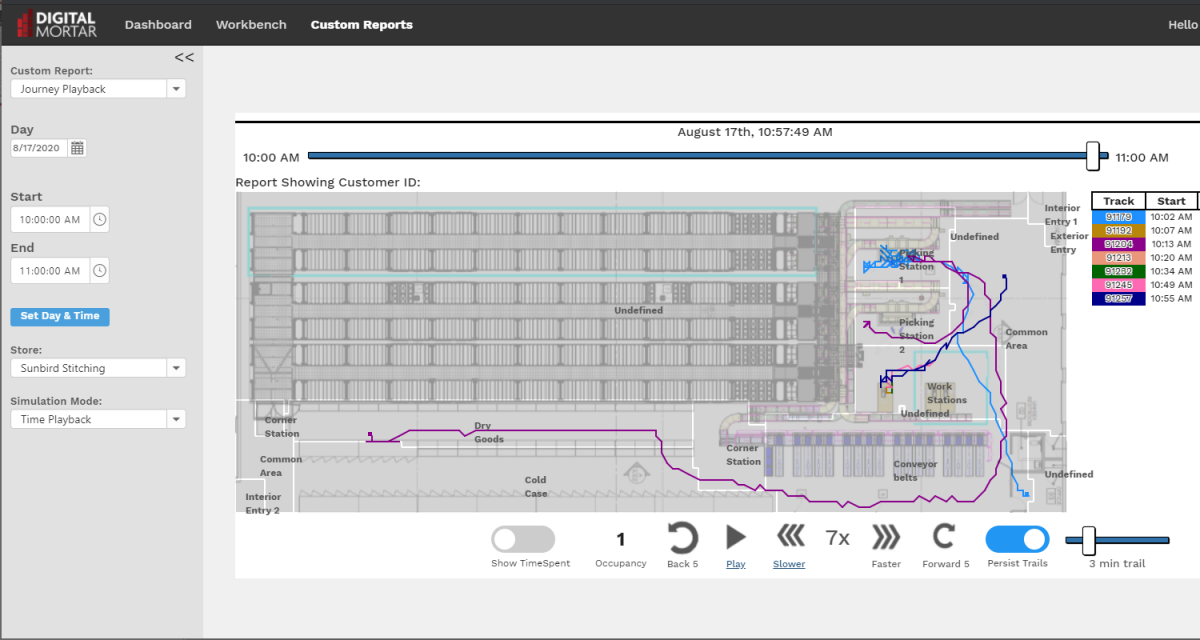Tracking Technologies for Labor and People-Process Measurement
Tracking Technologies for Labor and People-Process Measurement
By Gary Angel
|September 17, 2020

With fundamental changes in store operations, managing and improving people-processes is becoming vitally important and can be a source of true competitive advantage. But until recently, it was extraordinarily difficult to do.
Advances in people-tracking technology in the past few years have finally made people process measurement a reality. But it isn’t one technology – it’s actually three. Depending on the nature of your processes and the size and characteristics of your facilities, the right choice for your needs might be anyone of these three.
Video
With extraordinarily detailed and fine-grained people tracking, video works particularly well for smaller, more open spaces. Modern people-counting cameras are very good at people identification, provide extremely accurate positional tracking, and can be tuned to recognize special actions. In occupancy applications, we’ve seen this technology deliver better than 99% accuracy at people identification. But camera isn’t perfect for everything. Video isn’t appropriate when trying to cover extended areas (like a full Big-Box Store) or in highly cluttered environments where Line-of-Sight from above is frequently blocked. Not only are large areas expensive to cover with camera, but large (and cluttered) areas both experience significant breakage of the customer path. We do extensive ML-based path stitching to improve this, but in a dense, crowded environment it can be nearly impossible to get completely right. One other drawback to camera? It isn’t great for doing analysis at the person level as opposed to the task level. Uniquely identifying Associates requires facial recognition technologies that most companies are reluctant to deploy.
Bluetooth (BLE) Badging
Low-power Bluetooth is probably the most generally applicable people-process tracking solution. It’s cheaper than camera and it can cover very large areas. There is a little more impact to operations (BLE badges must be carried), but badging enables tracking at the individual level – something much harder to do with camera. Badges ping out at least once every second (and can ping out as often as 10 times a second) – so you do get a continuous stream of data. Be aware, though, that every Bluetooth receiver we’ve ever tested misses a decent percentage of pings. That’s why over-pinging is often necessary. When isn’t BLE appropriate? If you need very fine-grained positional data or need to break down specific types of actions, BLE might not get the job done. And since it requires carrying a badge, it does require that you the ability to ensure compliance.
Mobile
Mobile phones and tablets are surprisingly capable geo-location devices. If your employees already carry store-issued devices, you can modify the Apps they use to embed geo-location tracking. This is fairly easy to do, but it does mean that getting measurement is dependent on getting code into your App update cycle – that can be time-consuming in some organizations. The resulting system is similar to BLE Badging but no additional equipment is required (though you will often find that adding a smattering of cheap beacons to the facility improves accuracy) and the system can track down to the individual level. It can even integrate task information based on the device App usage – which can be a really powerful combination for analysis. For the most part, Mobile is similar to BLE. If you issue mobile devices it’s probably a cleaner solution. If you don’t, it’s quite a bit more expensive since even the cheapest capable Android devices are much more expensive than BLE badges.
Picking the right technology for people-process measurement is definitely non-trivial. It takes careful thought about your measurement use cases, your facilities and your operations. At Digital Mortar, we are entirely technology neutral. We help you pick the right technology for the job and get it implemented.
Click here to find out more!